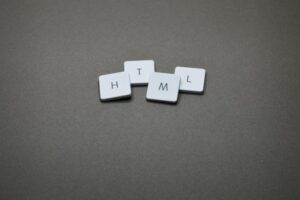Introduction to CSS
Definition and Purpose
Cascading Style Sheets, more commonly known as CSS, serve as the cornerstone of modern web design. This powerful styling language empowers developers and designers to transform the visual presentation of web documents. CSS separates the structure and content of a Web page from its visual representation, providing flexibility to, and elaborating on, the easier ways of developing Web pages.
Brief History
CSS was created in 1994 by Håkon Wium Lie, while working at CERN, came up with the idea. The World Wide Web Consortium actually recommended CSS1 as a standard back in 1996. Since then, CSS has gone through some sort of evolution: CSS2 came up in 1998, allowing for more advanced features, and CSS3 began to make the language modular and even more powerful.
CSS Fundamentals
Syntax and Structure
CSS syntax adheres to a straightforward structure. Each rule consists of a selector and a declaration block. The selector identifies the HTML elements to style, while the declaration block contains one or more declarations separated by semicolons. Each declaration includes a CSS property and a value, separated by a colon.
Selectors
Selectors form the crux of CSS targeting. They range from simple element selectors to more complex attribute and pseudo-class selectors. The judicious use of selectors allows for precise control over styling. Universal selectors, class selectors, and ID selectors provide varying degrees of specificity, enabling developers to craft intricate styling hierarchies.
Properties and Values
CSS properties define the aspects of an element that can be styled. These properties encompass a wide array of visual attributes, from colors and fonts to layouts and animations. Values assigned to these properties determine the specific styling applied. The symbiotic relationship between properties and values forms the foundation of CSS’s expressive power.
CSS Box Model
Content
The content area represents the innermost part of the CSS box model. It houses the actual content of an element, such as text, images, or other media. The dimensions of the content area can be explicitly set using properties like width and height.
Padding
Surrounding the content area is the padding. This transparent region provides spacing between the content and the element’s border. Padding can be adjusted individually for each side of the element, offering fine-grained control over internal spacing.
Border
The border encapsulates the padding and content areas. It serves as a visual boundary for the element. Borders can be styled with various properties, including color, width, and style. The border-radius property allows for the creation of rounded corners, adding a touch of sophistication to element design.
Margin
The outermost layer of the box model, the margin, creates space between the element and its surrounding elements. Margins play a crucial role in controlling layout and spacing within a document. Negative margins can be employed to create overlapping effects, adding depth to designs.
CSS Layout Techniques
Flexbox
Flexbox, short for Flexible Box Layout, revolutionized CSS layout design. This one-dimensional layout model provides a more efficient way to distribute space and align content within a container. Flexbox introduces concepts like main axis and cross axis, allowing for dynamic and responsive layouts with minimal effort.
Grid
CSS Grid Layout takes layout control to new heights. This two-dimensional system enables the creation of complex, grid-based layouts with ease. Grid introduces concepts like tracks, cells, and areas, providing unprecedented control over both rows and columns simultaneously. The ability to create asymmetrical layouts and overlap elements makes Grid a powerful tool in a developer’s arsenal.
Floats and Positioning
While newer layout techniques have gained prominence, floats and positioning remain relevant in certain scenarios. Floats allow elements to be pushed to one side, with other content wrapping around them. Positioning, with its absolute, relative, and fixed options, offers precise control over element placement. These techniques, when used judiciously, can complement modern layout approaches.
Responsive Web Design with CSS
Media Queries
Media queries are the backbone of responsive web design. These powerful functionalities enable developers to apply various styles to different device characteristics, such as screen width, height, and orientation. By using media queries, designers will keep the creation of liquid layouts that fluidly adapt to various screen sizes, allowing for an optimal user experience across devices.
Fluid Layouts
The concept of fluid layouts eschews fixed-width designs in favor of percentage-based widths. This approach allows content to expand or contract based on the available screen real estate. Fluid layouts, combined with max-width and min-width properties, ensure that content remains readable and visually appealing across a wide range of devices.
Mobile-First Approach
The mobile-first paradigm advocates designing for mobile devices as the primary use case, then progressively enhancing the experience for larger screens. This approach not only caters to the growing mobile user base but also encourages more focused, content-centric designs. By starting with mobile layouts and expanding outward, developers can create more efficient and streamlined stylesheets.
CSS Preprocessing
SASS
Syntactically Awesome Style Sheets, or SASS, extends CSS with features like variables, nested rules, and mixins. SASS introduces two syntax options: the indented syntax and SCSS (Sassy CSS). The ability to use mathematical operations and functions within stylesheets makes SASS a powerful tool for creating more maintainable and scalable CSS code.
LESS
LESS, another popular CSS preprocessor, shares many features with SASS but with a syntax more closely resembling traditional CSS. LESS introduces features like variables, mixins, and nesting, allowing for more organized and efficient stylesheet development. The ability to use JavaScript-style functions adds another layer of flexibility to LESS.
Stylus
Stylus takes a minimalist approach to CSS preprocessing. It offers a highly flexible syntax that can omit braces, colons, and semicolons. Stylus supports both indented and CSS-like syntaxes, catering to different coding preferences. The preprocessor’s robust set of built-in functions and ability to define custom functions make it a versatile choice for advanced CSS development.
CSS Frameworks
Bootstrap
Bootstrap is one of the most used CSS frameworks. It was created by Twitter. It has an extensive set of pre-designed components and a responsive grid system. Its thorough documentation and large community make Bootstrap perhaps an appealing option for rapid prototyping and development. Since Bootstrap is modular, developers have the option to choose just the components they need from its library.
Foundation
Foundation, created by ZURB, offers a flexible and customizable framework for building responsive websites. Known for its “mobile-first” approach, Foundation provides a robust grid system and a wide array of UI components. The framework’s emphasis on semantic markup and accessibility makes it a popular choice for projects requiring a high degree of customization.
Tailwind CSS
Tailwind CSS takes a unique approach to CSS frameworks by providing low-level utility classes. Instead of pre-designed components, Tailwind offers a set of atomic classes that can be composed to create custom designs. This utility-first methodology allows for rapid development and highly customized designs without the constraints of traditional CSS frameworks.
Advanced CSS Concepts
CSS Variables
CSS Custom Properties, colloquially known as CSS Variables, introduce dynamic values to stylesheets. These variables can be defined and reused throughout a stylesheet, allowing for more maintainable and flexible designs. The ability to update CSS Variables via JavaScript opens up new possibilities for creating interactive and theme-able interfaces.
CSS Transitions and Animations
CSS Transitions provide a way to add smooth state changes to elements without the need for JavaScript. By specifying transition properties, developers can create subtle animations that enhance user experience. CSS Animations, on the other hand, offer more complex, keyframe-based animations. These tools allow for the creation of engaging, interactive interfaces purely through CSS.
CSS Transforms
CSS Transforms enable the manipulation of elements in two-dimensional or three-dimensional space. Properties like translate, rotate, and scale allow for dynamic visual effects without affecting the document flow. When combined with transitions or animations, transforms can create compelling visual narratives and enhance user engagement.
CSS Best Practices
Naming Conventions
Adopting consistent naming conventions is crucial for maintaining large-scale CSS projects. Methodologies like BEM (Block Element Modifier) provide structured approaches to naming CSS classes. These conventions not only improve code readability but also help in creating more modular and reusable styles.
Code Organization
Proper code organization is paramount in CSS development. Strategies like grouping related styles, using comments effectively, and employing a logical file structure contribute to more maintainable stylesheets. Techniques such as the “inverted triangle” CSS architecture provide frameworks for organizing styles based on their specificity and reach.
Performance Optimization
Optimizing CSS performance involves minimizing redundant code, reducing specificity where possible, and leveraging browser caching. Techniques like CSS sprites for combining multiple images and strategic use of shorthand properties can significantly improve load times. Regular auditing of stylesheets to remove unused styles helps in keeping the codebase lean and efficient.
CSS and Accessibility
Color Contrast
Ensuring sufficient color contrast between text and background is crucial for readability and accessibility. The Web Content Accessibility Guidelines (WCAG) provide specific contrast ratios that should be met to accommodate users with visual impairments. Tools like contrast checkers can help developers ensure their color choices meet these standards.
Font Sizes and Readability
It is very important to pick font and line sizes that are readable. Switch to relative units-ideally, em or rem for more flexible and scalable typography. The choice of font, spacing of letters, and line length should be made with readability on multiple devices in mind.
Screen Reader Compatibility
CSS plays a role in creating screen reader-friendly layouts. Techniques like using semantic HTML elements, providing alternative text for images, and using ARIA attributes when necessary contribute to a more accessible web experience. CSS can be used to visually hide content that should be available to screen readers, ensuring a comprehensive experience for all users.
CSS and Browser Compatibility
Vendor Prefixes
Vendor prefixes allow browsers to implement experimental or non-standard CSS features. While the use of prefixes has decreased with improved standardization, they remain relevant for supporting older browsers. Autoprefixer tools can automatically add necessary prefixes, reducing the manual overhead for developers.
Feature Detection
Feature detection techniques, often implemented through JavaScript libraries like Modernizr, allow developers to check for browser support of specific CSS features. This approach enables the creation of robust fallback strategies, ensuring a consistent experience across different browsers and versions.
Polyfills and Fallbacks
Polyfills and fallbacks provide ways to support newer CSS features in older browsers. Polyfills typically use JavaScript to mimic the behavior of modern CSS features, while CSS fallbacks involve providing alternative styling for browsers that don’t support certain properties. These techniques allow developers to leverage cutting-edge CSS while maintaining broad compatibility.
CSS in Modern Web Development
CSS-in-JS
CSS-in-JS refers to a variety of techniques for writing CSS code within JavaScript. Libraries like styled-components and Emotion allow developers to create component-scoped styles, often with the added benefit of dynamic styling based on props. This approach aligns well with component-based architectures common in modern frontend frameworks.
CSS Modules
CSS Modules provide a way to write modular and reusable CSS by automatically scoping class names to specific components. This technique helps prevent naming conflicts and unintended style leaks, particularly in large-scale applications. CSS Modules can be used with various build tools and frameworks, offering a balance between traditional CSS and more JavaScript-centric approaches.
Atomic CSS
Atomic CSS, also known as functional CSS, involves using small, single-purpose classes to style elements. Frameworks like Tachyons and Tailwind CSS exemplify this approach. Atomic CSS can lead to highly reusable styles and smaller overall CSS file sizes, though it requires a different mental model compared to traditional CSS authoring.
Debugging CSS
Browser Developer Tools
Modern browser developer tools offer powerful features for inspecting and debugging CSS. These tools allow developers to view computed styles, modify CSS in real-time, and analyze the cascade and specificity of rules. Features like the CSS Overview panel in Chrome DevTools provide insights into color usage, font information, and unused declarations.
CSS Linting
CSS linters, such as stylelint, enforce code quality through penalizing consistent styling and noticing obvious mistakes. Such linters can be configured for checks to find duplicate properties, invalid property values, and naming convention adherence. The integration of linting into the development workflow significantly enhances code quality by discovering issues upfront in the development process.
Common CSS Pitfalls
Awareness of common CSS pitfalls can help developers avoid frustrating debugging sessions. Issues like z-index stacking contexts, float clearing, and specificity conflicts are frequent sources of layout problems. Understanding these pitfalls and their solutions is crucial for efficient CSS development and troubleshooting.
CSS and Performance
Minification
Minifying CSS involves removing unnecessary characters like whitespace and comments from stylesheets. This process reduces file size, leading to faster load times. Tools like cssnano can automatically minify CSS as part of the build process, ensuring optimal performance without sacrificing development-time readability.
Critical CSS
Critical CSS refers to the practice of inlining the minimum amount of CSS required to render the above-the-fold content of a webpage. This technique can significantly improve perceived load times by allowing the initial content to render quickly. Tools and build processes can help automate the extraction and inlining of critical CSS.
Lazy Loading
Lazy loading CSS involves deferring the loading of non-critical styles until they are needed. This can be achieved through techniques like loading stylesheets asynchronously or using JavaScript to inject styles based on user interactions. Lazy loading can improve initial page load times, especially for large applications with many components.
Future of CSS
Upcoming CSS Features
The CSS working group continually develops new features to enhance the language’s capabilities. Upcoming features like Container Queries, which allow styles to respond to the size of a parent container, and the :is() and :where() pseudo-classes for more flexible selections, promise to further streamline responsive design and selector logic.
CSS Houdini
CSS Houdini represents a set of low-level APIs that give developers direct access to the CSS Object Model (CSSOM). This allows for the creation of new CSS features directly in JavaScript, potentially revolutionizing how custom layouts and paint effects are implemented. Houdini aims to make the process of extending CSS more standardized and efficient.
CSS and Web Components
The integration of CSS with Web Components opens up new possibilities for creating reusable, encapsulated UI elements. Shadow DOM allows for scoped styling within components, while custom properties (CSS variables) facilitate theming and customization. As Web Components gain broader adoption, their interplay with CSS will likely shape the future of component-based web development.
In conclusion, CSS stands as a testament to the ever-evolving nature of web technologies. From its humble beginnings as a simple styling language to its current status as a complex and powerful tool for creating dynamic, responsive, and accessible web experiences, CSS continues to push the boundaries of web design and development.


